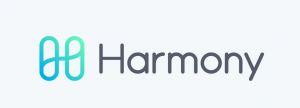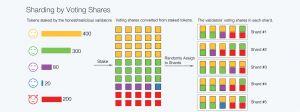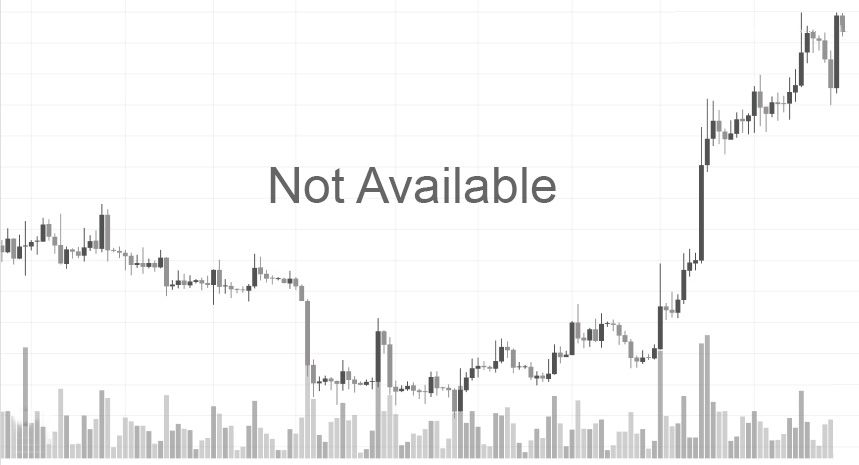Harmony (ONE) is a blockchain-based platform, built to solve the riddle of delivering both scalability and decentralization at no expense of one another.

What Is Harmony?
Launched as part of the initial exchange offering (IEO) on the Binance Launchpad in May 2019, Harmony (ONE) is a decentralized blockchain platform designed as a bridge between scalability and decentralization efforts. Its development went under the motto of “decentralization at scale” with the focus on data sharing and the creation of marketplaces of fungible tokens and non-fungible assets. Furthermore, Harmony comes with an additional promise of delivering high throughput accompanied by two “lows”: latency and fees. Combined, they are supposed to put the platform at the heart of the efforts to lay the foundation of the future decentralized trustless economies.
Prior to the IEO, Harmony started out as a startup in 2018. Its fundraising project managed to raise USD 18 million in April 2019, drawing attention from multiple investors such as Silicon Valley’s Consensus Capital, Hong Kong’s Lemniscap VC and others. More than 2.8 billion of its ONE tokens were purchased by investors, with 12.6 billion of them set aside for pre-mining. To investors, Harmony promises access to an ecosystem which will support its adoption across various markets, with the focus on data sharing, decentralized marketplaces, supply chain tracking, ad exchanges, credit rating systems and gaming.
What Is Harmony Trying to Achieve?
Harmony’s development focused on the idea that no platform has achieved a satisfying degree of balance between decentralization and scalability, as explained in the project’s whitepaper. Based on this, it promises to deliver the goods on the following goals:
- Harmony wants to get rid of structural limitations preventing the cryptocurrencies from becoming genuine digital money. This primarily refers to the scalability problem, such as that faced by Bitcoin whose increased popularity created performance and brought about increased costs of the use of its payment system. Instead of this, Harmony will implement deep sharding technology which covers not only the transaction validation and network communication, but the blockchain state as well. Its bid for full scalability is based on getting rid of the modular approach and trying to solve consensus “on scale”. This includes optimizations which are being added across multiple layers of consensus algorithms, networking and systems to improve performance without hurting decentralization.
- Higher transaction throughput is what should set Harmony apart from the likes of Ethereum and other blockchain solutions which are forced to achieve performance gains by sacrificing other features. Harmony developers describe competing solutions as unable to resolve scalability issues or provide support for applications which require high throughput performance, such as with gaming or decentralized exchanges. Similarly, blockchains such as EOS or IOTA tried replacing consensus models and introducing new tech, such as directed acyclic graph (DAG). All of these came at the expense of security and/or decentralization which Harmony aims to preserve by creating shards (groups) of validators that would be able to process transactions simultaneously. Based on this, the total transaction throughput should increase in a linear manner and in parallel with the growth in the number of shards. In September 2018, Harmony’s testnet managed to achieve 118,000 TPS with some 44,000 nodes, with the hope to close the gap to the Visa’s 2,000 TPS on a daily basis.
- Harmony’s consensus protocol goes for speed and energy efficiency. Much of the Harmony’s scalability and throughput promises rest on the ability of its Fast Byzantine Fault Tolerant protocol (FBFT) to employ parallel transaction processing to scale with the size of the network and effectively tackle its connection latency. Its network topology is designed to enable for faster consensus reaching and message exchange. At the same time, Harmony features a kernel designed to run its protocol in a manner which allows a wider range of devices to participate in the consensus building, thus strengthening its decentralization. The deep sharding process itself relies on adaptive proof-of-stake model based on distributed randomness generation (DRG) procedure which is described as secure, easily verifiable and scalable.

How Does Harmony’s Deep Sharding Work?
Sharding has emerged as one of the methods by which the blockchain developers aim to increase transaction speeds of the blockchain-based platforms. In short, the concept rests on the approach which is already being used in databases to improve their efficiency. One of the best-known implementations of sharding in the crypto world is the one used with Zilliqa. Each of its shards is capable of processing a fraction of the totality of transactions taking place on the Zilliqa network. The platform thus profits from the increased number of shards on it, as the transaction can be managed by more units which take care of them.
Supposedly, the problem the Harmony developers have with this approach is that it does not include the division of the blockchain data storage. This prevents the devices with limited access to resources to participate in the network and increases the risk of single-shard takeover attacks. Instead of this, Harmony proposes the deep sharding of the blockchain state:
- This approach involves sharding on both the transaction and consensus layers.
- Based on this, the nodes can identify other nodes which can play a role in the transaction and make transactions only with them as part of the consensus-building procedure.
- This is supposed to improve the parallel processing capacity and, in turn, throughput performance of the platform.
- Finally, the elimination of the need to store the whole of the blockchain state by the nodes allows smaller capacity devices to become nodes on the network as well.
How Does Harmony’s Sharding Protect Itself?
Sharding systems would be more exposed to malicious code attacks were it not for the random assignment of nodes to shards. Based on randomizing, the code has a hard time finding the appropriate shard it is attributed to. This had led to a variety of options being implemented with various crypto platforms employing this technology.
The distributed randomness generation (DRG) used by Harmony came about after its developers studied similar solutions used by the likes of OmniLedger and RapidChain. All of them were found lacking in key aspects, such as speed and security, leading to the creation of a unique system for Harmony:
- The Harmony team went for combining the strengths of the Verifiable Random Function (VRF), implemented in Algorand, and Verifiable Delay Function (VDF) proposed for the Ethereum 2.0. With the help of BRH, validator nodes create random numbers and forward them to leader nodes which use this information to come up with the final random number. At the same time, the VDF is used to postpone the revealing of this number to make the process safer.
- Compared to OmniLedger’s RandHound DRG protocol which was described as too slow for larger decentralized systems, Harmony’s solution is supposedly much faster. Also, compared to the VSS system, such as the one found with RapidChain, the Harmony’s protocol is described as unbiasable and verifiable.
- Finally, Harmony went beyond what was proposed for the Ethereum 2.0 by implementing the BFT consensus to provide finality to the random number.
What Is the FBFT Consensus?
Moving beyond both the standardized Proof-of-Work and Proof-of-Stake consensus protocols, Harmony went for its own solution called Fast Byzantine Fault Tolerance (FBFT). This came as a response to the Zilliqa’s Practical Byzantine Fault Tolerance (PBFT) model which is deemed as increasing the complexity of the communication process:
- With the FBFT, validator nodes on Harmony do not engage in vote broadcasting. At the same time, the size of multi-signature is designed to reduce the communication management complexity.
- The validators are appointed based on the Proof of Stake approach i.e. their election depends on the ownership of a specific number of tokens. The larger their number, the higher the chance for the selection.
- With Harmony, the beacon chain is a specialized shard chain which accepts the validators’ stakes. It is also tasked with the random number generation for the DRG.

Cross-shard Communication
Cross-shard communication is enabled on the Harmony platform with the help of Kademlia, a distributed hash table and routing protocol. This tech is described as the key asset which is supposed to lower the complexity of the communication procedures running on the Harmony network.
Based on Kademlia, each network node keeps a routing table which maintains information on the distance of the remaining shards, which is a function of the shard ID. Nodes which are parts of a shard can send messages to the shard with the closest IDs only, eliminating the need to broadcast the message to all other shards in its “neighborhood”. Kademlia routing is also used to send block headers to the beacon chain whenever a new block is added to the shard chain.
The Role of ONE Token
The ONE token keeps the cogs of the Harmony’s ecosystem up and running by enabling participation in it and serving as the payment vehicle for various activities on the network. This is done in the following manner:
- The One token is used as a stake in the consensus model used with Harmony. The holders can earn block rewards and are incentivized to keep the system healthy.
- The tokens are used to pay for various fees, including the transaction fees, storage fees and gas fees.
- With the help of ONE tokens, the holders are granted voting rights as part of the platform’s governance system.
Harmony found itself at the heart of the propositions to introduce the Universal Basic Income (UBI) based on the personal data sharing. The data would be shared in exchange for payment provided by advertisers, retailers or the media, all with the help of the Harmony blockchain. The proceeds would serve as a supplementary or basic income, followed by the dismantling of the current data-sharing monopolies.
The Harmony team comprises more than 30 members, with their expertise varying from engineering, academic work and entrepreneurship. The key personnel includes Stephen Tse (of Google and Microsoft Research), Nicolas Burtey, Alok Kothari, Rongjian Lan, Minh Doan, Nick White and others.
